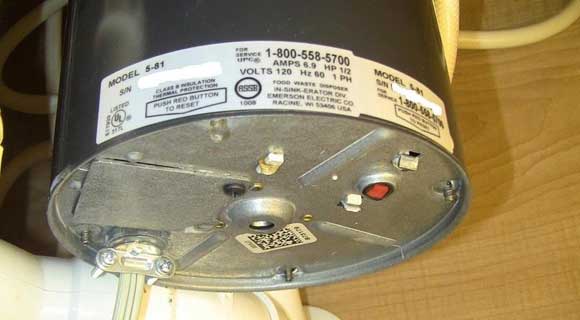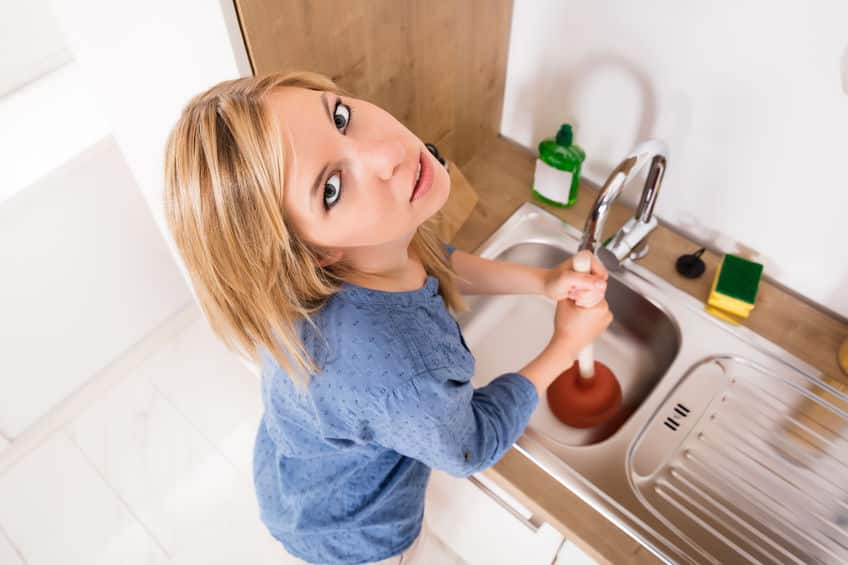Your Comprehensive Guide to Fixing a Leaky Garbage Disposal
Your Comprehensive Guide to Fixing a Leaky Garbage Disposal
Blog Article
Listed here down the page you will find more excellent facts when it comes to How to fix a pretty consistent leak from my garbage disposal.

Waste disposal unit are vital cooking area devices that help in dealing with food waste effectively. Nevertheless, a dripping garbage disposal can be a discouraging and untidy issue to deal with. Thankfully, numerous leakages can be taken care of quickly with a few easy steps. In this article, we will go over exactly how to deal with a dripping waste disposal unit successfully.
Introduction
Garbage disposals are set up under kitchen area sinks and are made to shred food waste right into smaller sized pieces, allowing it to pass through the pipes system easily. While these tools are normally trustworthy, leaks can occur with time because of wear and tear, loosened links, or damage to the unit.
Usual Root Causes Of Leaks in Waste Disposals
Worn Seals and Gaskets
Seals and gaskets play a vital role in preventing water from dripping out of the garbage disposal. Over time, these parts can weaken, bring about leaks around the disposal device.
Loose Connections
The links in between the garbage disposal and the pipes system can become loose with time, triggering water to leakage out during procedure.
Fractures or Openings in the Disposal Unit
Physical damages to the garbage disposal, such as fractures or openings in the housing, can likewise result in leakages.
Identifying the Source of the Leakage
Before attempting to deal with a leaking garbage disposal, it is essential to determine the resource of the leak. This can usually be done via visual assessment or by performing easy examinations.
Visual Evaluation
Check the waste disposal unit unit thoroughly for any type of indicators of water leak. Pay close attention to areas around seals, gaskets, and connection factors.
Examining for Leakages
One way to check for leaks is by running water with the disposal system and looking for any type of visible indicators of leak.
Tools and Products Needed for Dealing With a Leaking Garbage Disposal
Prior to starting the repair service process, collect the essential tools and materials, including a screwdriver, adjustable wrench, plumbing professional's putty, substitute seals or gaskets, and epoxy or patching product for fixing cracks or holes.
Step-by-Step Overview to Fixing a Leaking Garbage Disposal
Turn Off the Power
Before attempting any repairs, ensure that the power to the garbage disposal unit is turned off to prevent the threat of electrical shock.
Situate the Leakage
Determine the precise place of the leak and determine the reason.
Tighten up Links
Utilize a wrench to tighten any loosened links between the disposal unit and the plumbing system.
Change Seals or Gaskets
If the leak is due to worn seals or gaskets, get rid of the old elements and replace them with new ones.
Patching Splits or Openings
For fractures or holes in the disposal device, use epoxy or a suitable patching product to secure the damaged location.
Checking the Garbage Disposal After Repair
As soon as the repair service is total, test the waste disposal unit by running water with it to ensure that the leakage has been resolved.
Preventive Upkeep Tips to Prevent Future Leakages
To avoid future leaks, it is important to carry out normal upkeep on your garbage disposal. This consists of keeping it tidy, avoiding placing click here non-food items or difficult objects down the disposal, and occasionally checking for leakages or other problems.
Conclusion
To conclude, fixing a dripping waste disposal unit is a fairly uncomplicated process that can be finished with basic tools and products. By following the steps laid out in this short article and exercising preventive maintenance, you can maintain your waste disposal unit in good working condition and prevent pricey repair work in the future.
What to Do About a Leaking Garbage Disposal
A leaking garbage disposal often goes unnoticed until you confront a sopping cabinet, a foul-smelling puddle, or an audible drip-drip-drip from the unit. The fix can be frustrating, too, because the leak can stem from a number of components in the system. Fortunately, with a little sleuthing, you can zero in on the leak and—depending on the exact location—stop the icky oozing and repair the component that caused it. Worst case scenario, if it turns out that the garbage disposal must be replaced, installing a new one is a reasonable do-it-yourself task for those with basic plumbing skills. Read on to keep the cash you’d otherwise hand over to a pro.
Prepare to find the leak
Prior to testing the garbage disposal for leaks, unplug it at the wall outlet and turn off the power from the breaker box to prevent electrical shock. Then insert a watertight sink stopper into your sink drain and wipe the unit dry with a clean cloth. In any handy container, mix a few drops of food coloring into a few cups of water, and pour the dyed water onto the sink stopper to help you locate the leak.
Investigate the source
the top, where the disposal meets the sink drain the side, where the dishwasher hose or main drain pipe connects to the disposal or the bottom of the unit Inspect each of these locations while gliding a light-colored rag over the unit; the dyed water will readily show on the rag and reveal the location of the leak. If a leak isn’t immediately apparent, remove the sink stopper and pour a few more cups of dyed water down the sink drain, then check for leaks again. Leaks near the top of the unit are more likely to show themselves while the sink is plugged, while side and bottom leaks are more noticeable while the sink is unplugged.
The metal sink flange that sits directly inside the sink drain is typically sealed around the top with plumber’s putty (a clay-like sealant) and then secured from under the sink with bolts. If the plumber’s putty deteriorates, or the bolts loosen, the flange can no longer form a watertight seal between the sink drain and the disposal—which could cause a leak at the top of the unit.
To reseal the leaky flange, you must first detach the garbage disposal. Start by loosening the screws securing the main drain pipe to the disposal, then loosen the screws in the metal clamp securing the dishwasher hose to the disposal and detach the drain pipe and dishwasher hose from the disposal. Loosen the screws in the mounting ring that connects the disposal to the metal mounting assembly beneath the sink, then pull down the disposal and carefully set it on a clean, dry surface. Loosen the bolts in the mounting assembly with a wrench, then pull down the mounting assembly and set it near the disposal.

Do you like more info about Garbage Disposal Leaking From Bottom? Write a comment down below. We will be delighted to listen to your suggestions about this blog entry. We are looking forward to see you back again in the future. Sharing is nice. You just don't know, you may very well be doing someone a favor. Thank you so much for taking the time to read it.
Book Now! Report this page